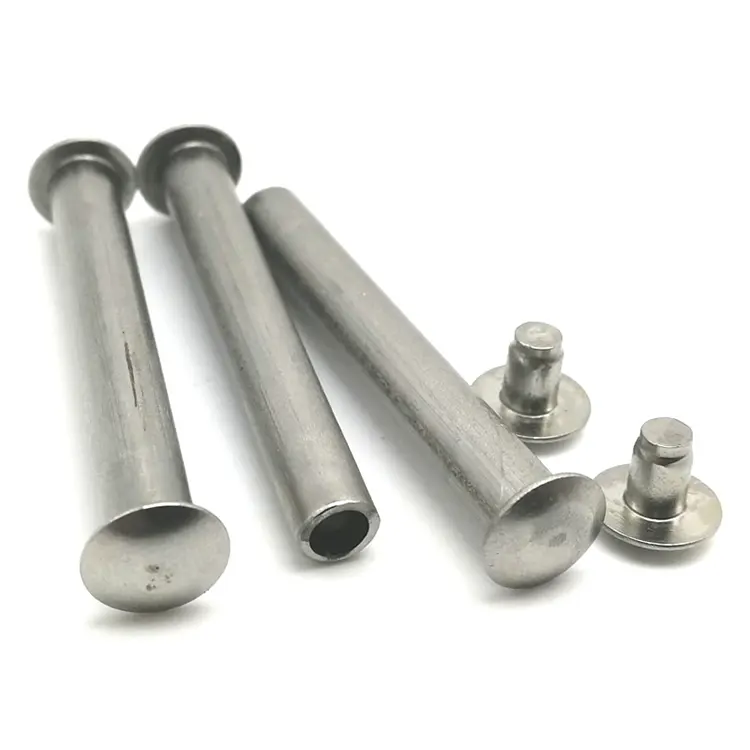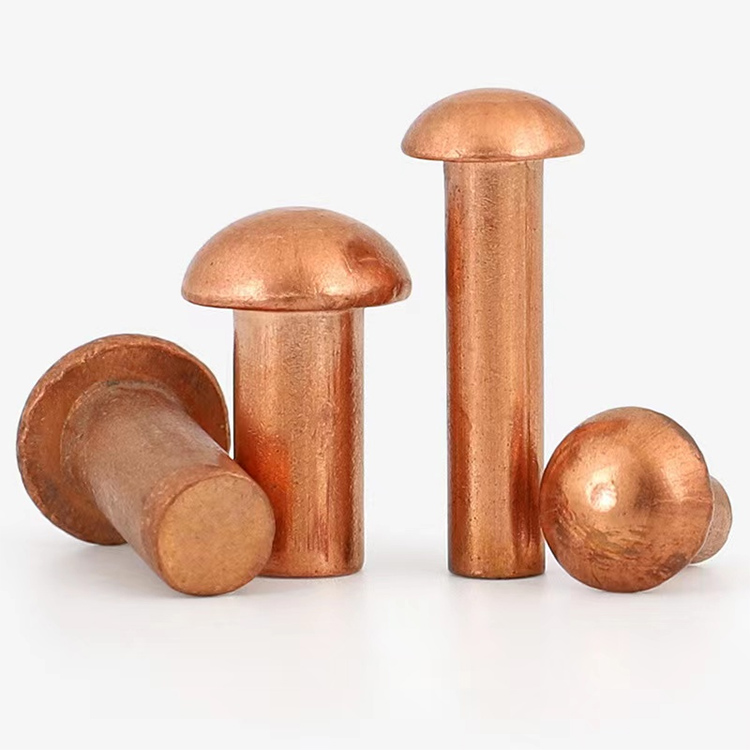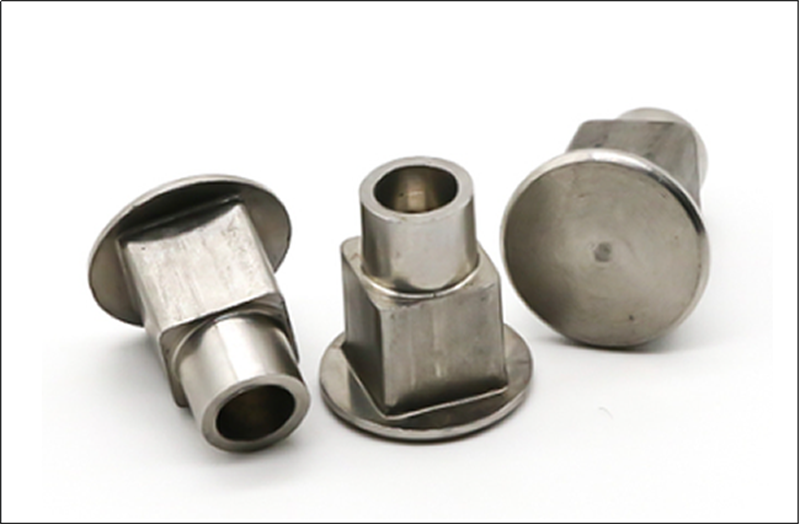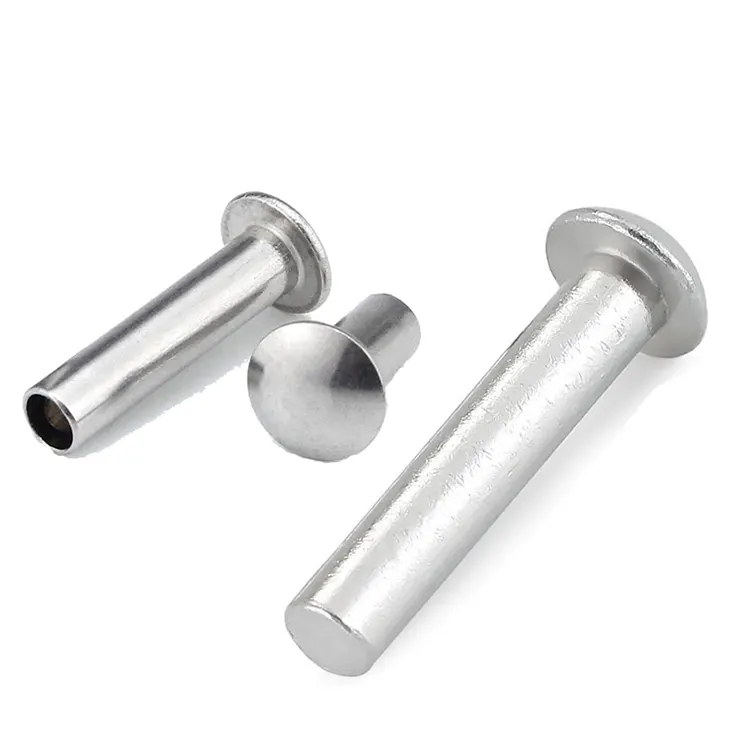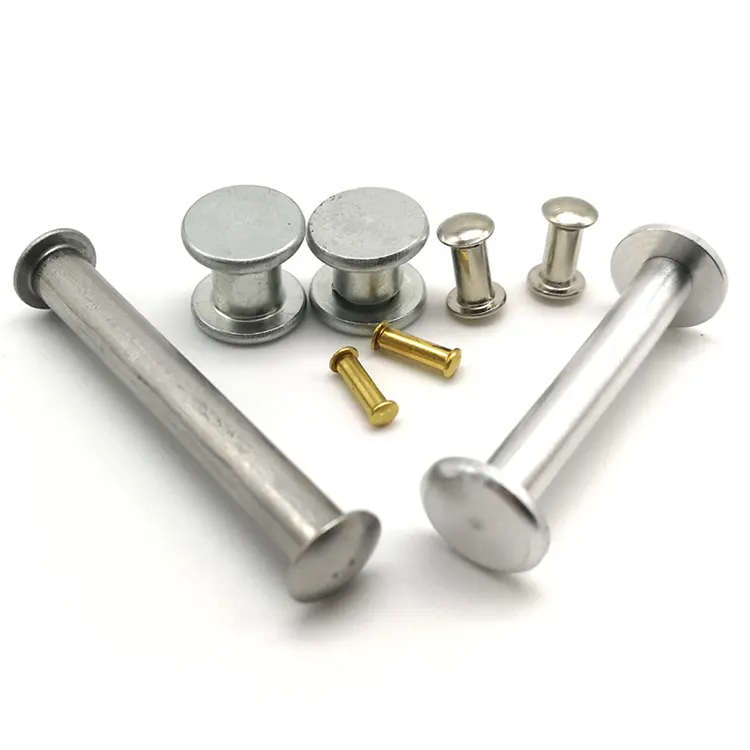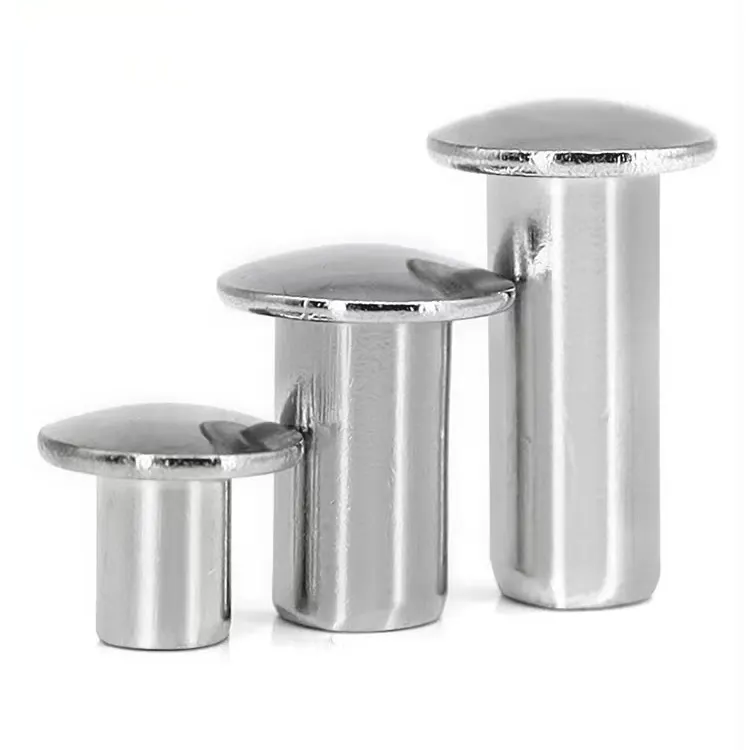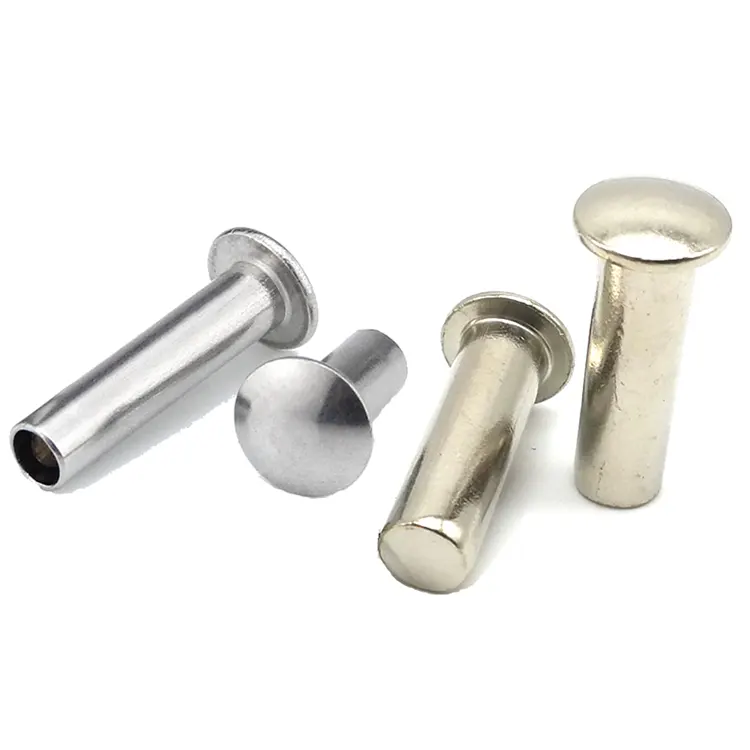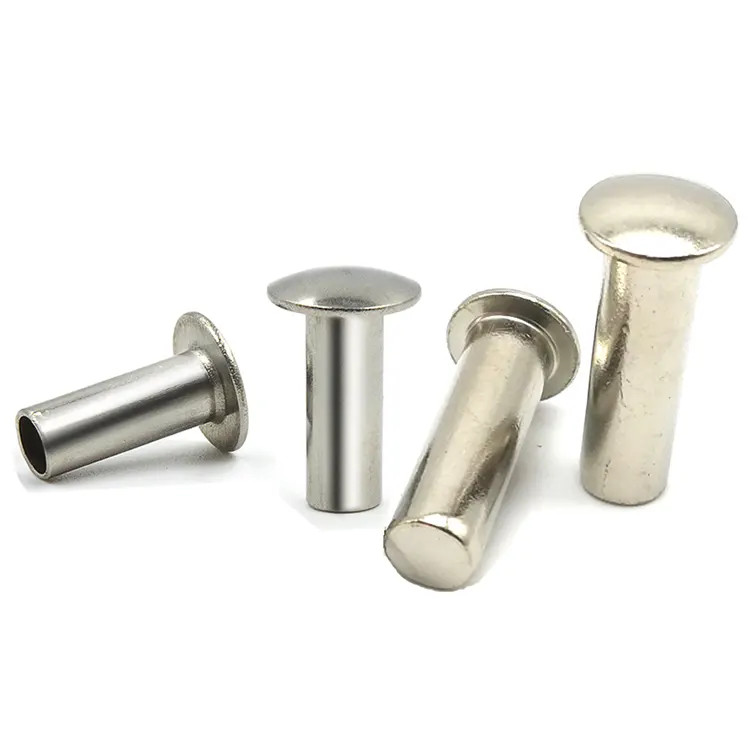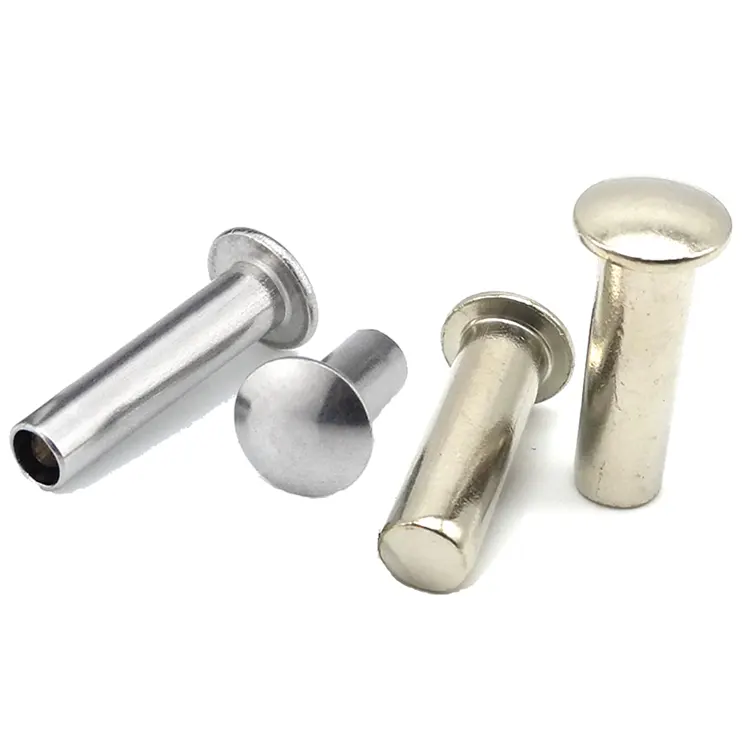Rivets spéciaux
One of Chinese manufacturer of Special Rivets, offering excellent quality at a competitive price, is Notin. Feel free to get in touch.
In the field of mechanical manufacturing and assembly, rivets are a common fastener used to professionally connect two or more parts. According to the degree of standardization, rivets can be divided into two categories: standard rivets and non-standard rivets. The size, shape and material of standard rivets are uniformly specified, while non-standard rivets are customized according to specific needs. The following will introduce the characteristics and applications of non-standard rivets from multiple aspects.
What are non-standard rivets?
Non-standard rivets are also called special rivets. They refer to rivets that do not meet national standards or industry general standards. Their size, material, structure and other parameters are designed and manufactured according to the specific needs of customers. Due to the different connection requirements of different industries and equipment, standard rivets may not meet the requirements of certain special scenarios, so non-standard rivets came into being.
What are the characteristics of special rivets?
(1) Strong customization: Non-standard rivets can be personalized according to factors such as the use environment, stress conditions, and assembly methods to ensure that they perform well in actual applications.
(2) Diverse materials: In addition to common carbon steel and stainless steel, non-standard rivets can also be made of special materials such as aluminum alloy, copper alloy, titanium alloy, etc. to meet different corrosion resistance, strength and weight requirements.
(3) Flexible structure: The structure of non-standard rivets can be adjusted according to needs, such as head shape, stem diameter, length, etc., and can even be designed to be hollow, semi-hollow or other special shapes.
- View as
Rivets à tête universelle
Un rivet à tête universelle est un type de composant de connexion mécanique dans le système de classification des rivets. Sa tête a une structure plate en forme d'arc et convient à l'assemblage de matériaux tels que de fines feuilles de métal, du cuir, de la toile et du bois. Ce type de rivet est fixé par des processus de rivetage à froid ou à chaud et présente les avantages d'une installation facile et d'une rentabilité dans des environnements sous pression non scellés. Comparés à des produits similaires tels que les rivets à tête fraisée, les rivets à tête universelle sont plus adaptés au rivetage de tôles fines ou de matériaux non métalliques tels que le cuir, la toile et le bois en raison de leur tête hémisphérique saillante.
En savoir plusenvoyer une demandeRivets en deux pièces
Les rivets en deux pièces se composent généralement de deux parties : un rivet femelle et un rivet mâle. Le rivet femelle possède un trou intérieur à une extrémité et une extrémité fixe à l'autre. Le rivet mâle, comme un soliderivet étape, s'insère dans le trou intérieur du rivet femelle. Pour l'utiliser, fixez d'abord le rivet femelle à un objet, puis insérez le rivet mâle dans le rivet femelle et martelez-le en place, joignant ainsi les deux objets. Cette conception simplifie l'installation tout en offrant une force de connexion fiable. Nuote Metals a 10 ans d'expérience professionnelle dans ce type de rivets en deux pièces, n'hésitez pas à nous envoyer votre dessin.
En savoir plusenvoyer une demandeRivets à tête bombée
Nuote Metals fabrique et vend des rivets à tête bombée. Nous sommes situés à Dongguan, en Chine, et nous disposons de plus de 40 machines de frappe à froid capables de produire une large gamme de spécifications et de types de rivets. Nous proposons également des rivets personnalisés. Les rivets à tête bombée sont un composant riveté courant, composé d'une tige, d'une tête et d'une queue. Ils se caractérisent par une tête large et plate et une queue creuse ou pleine, offrant d'excellentes propriétés d'étanchéité et d'imperméabilisation.
En savoir plusenvoyer une demandeRivets à tête ronde en acier
Nuote Metals fabrique et vend des rivets à tête ronde en acier dans une variété de finitions, notamment le zingage, le nickelage et le Dacromet. Les rivets à tête ronde présentent une forme de tête semi-circulaire, offrant une excellente résistance à la traction et au cisaillement, capable de résister à de lourdes charges. La conception à tête ronde permet au rivet de mieux s'adapter au composant de connexion lors de la connexion, améliorant ainsi la stabilité et l'étanchéité du joint.
En savoir plusenvoyer une demandeRivets en acier
Les rivets en acier au carbone sont une fixation mécanique courante utilisée dans une grande variété de produits industriels et quotidiens. Leur fonction principale est de connecter en toute sécurité deux ou plusieurs composants ensemble, créant ainsi une structure stable. Les rivets en acier au carbone sont populaires en raison de leur résistance, de leur durabilité et de leur rentabilité. Nuote Metals fabrique des rivets en acier au carbone depuis plus d'une décennie. Situé à Dongguan, en Chine, connue sous le nom de « l'usine du monde », nous accueillons les visiteurs du monde entier.
En savoir plusenvoyer une demandeRivets à tête cylindrique en acier
Les rivets à tête cylindrique en acier sont des fixations industrielles courantes utilisées dans un large éventail d'applications, notamment l'automobile, l'aviation et la construction. Nuote Metals est spécialisé dans la production de rivets à tête cylindrique en acier, vendus dans le monde entier. Nous proposons une large gamme de rivets fabriqués dans divers matériaux, notamment le laiton, l'acier inoxydable, l'aluminium et le cuivre. Nous pouvons également personnaliser nos produits avec divers traitements de surface, tels que la galvanoplastie, le décapage et l'anodisation, pour répondre aux exigences des clients.
En savoir plusenvoyer une demandeWhat are the characteristics of special rivets?
(1) Strong customization: Non-standard rivets can be personalized according to factors such as the use environment, stress conditions, and assembly methods to ensure that they perform well in actual applications.
(2) Diverse materials: In addition to common carbon steel and stainless steel, non-standard rivets can also be made of special materials such as aluminum alloy, copper alloy, titanium alloy, etc. to meet different corrosion resistance, strength and weight requirements.
(3) Flexible structure: The structure of non-standard rivets can be adjusted according to needs, such as head shape, stem diameter, length, etc., and can even be designed to be hollow, semi-hollow or other special shapes.
Manufacturing process of special rivets
The manufacturing of non-standard rivets involves multiple links, mainly including:
1.Material selection: Select suitable metal or alloy materials according to the use environment. 2. 2.Cold heading or hot heading: Use pressure processing to form the basic shape of the rivet into the metal blank.
3.Turning or milling: Fine-process the details such as the head and stem of the rivet to ensure dimensional accuracy.
4.Surface treatment: Such as galvanizing, nickel plating, anodizing, etc. to improve corrosion resistance or aesthetics.
Advantages and limitations of special rivets
(1) Advantages: They can meet special needs, improve assembly efficiency and connection reliability, and are suitable for complex or high-demand application scenarios.
(2) Limitations: Since they are customized products, the production cost is high, the delivery cycle is relatively long, and customers are required to provide detailed technical parameters.
How to choose suitable special rivets?
(1) Clarify the needs: Determine the key parameters such as the rivet's operating environment, stress conditions, and corrosion resistance requirements.
(2) Material matching: Select the appropriate material based on actual needs to avoid over-design that leads to increased costs.
(3) Communicate with suppliers: Provide detailed technical drawings or samples to ensure that the non-standard rivets produced meet expectations.
What are the main applications of special rivets?
(1) Aerospace: Aircraft, rockets and other equipment have extremely high requirements for the weight, strength and high-temperature resistance of fasteners. Non-standard rivets can be optimized according to specific needs.
(2) Automobile manufacturing: Certain special models or high-performance vehicles may require non-standard rivets to meet the needs of lightweight or high-strength connections.
(3) Electronic equipment: Precision instruments or small electronic equipment may require micro non-standard rivets to ensure the stability and compactness of the connection.
(4) Construction industry: Some special-structured buildings or decoration projects may use non-standard rivets to meet specific installation requirements.
Market status of special rivets
With the advancement of industrial technology, more and more industries have begun to use non-standard rivets to optimize product design. At present, non-standard rivet manufacturers are mainly concentrated in the Yangtze River Delta and Pearl River Delta regions in China, and can provide a variety of customized services. Due to the high unit price of non-standard rivets, its market size is relatively small, but the demand in the high-end manufacturing field continues to grow.
Future development trends
(1) Lightweight design: With the improvement of energy-saving and environmental protection requirements, non-standard rivets made of lightweight materials will be more popular.
(2) Intelligent production: Automated equipment and digital management will further improve the production efficiency and quality stability of non-standard rivets.
(3) Wider application: Emerging industries such as new energy and robotics may drive the growth of demand for non-standard rivets.
In summary, special rivets are highly customized fasteners that can meet special needs that standard rivets cannot meet. Although its production cost is relatively high, it plays an irreplaceable role in industries such as aerospace, automobiles, and electronics. In the future, with the advancement of manufacturing technology, the application scope of non-standard rivets is expected to further expand.

